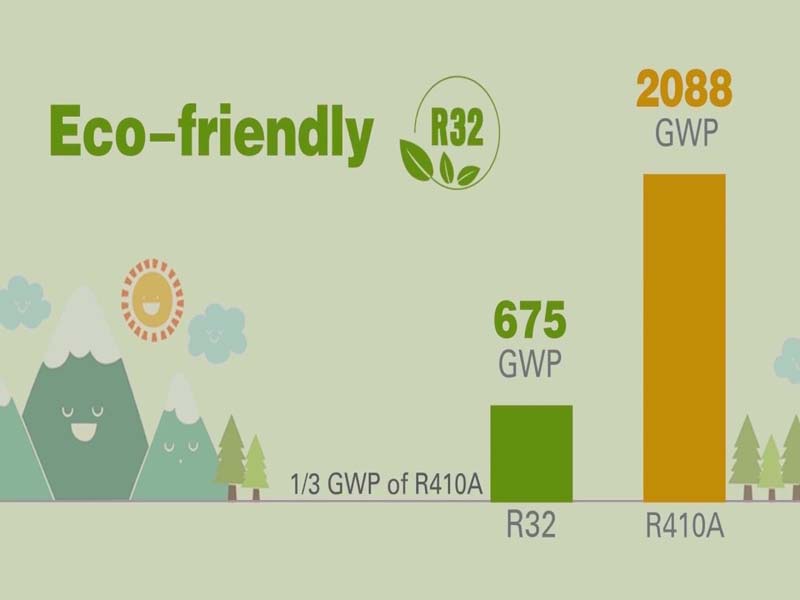
Indeed R32 has a number of other attributes which make it an attractive alternative, including:
• R32 reduces charging volume by 30% compared to R410A
• R32 has higher efficiency (10% compared to R410A) => Higher COP and EER
• R32 delivers better performance at extreme outdoor temperature
The EU F-Gases Regulation follows previous research which revealed that R32 could be an attractive solution with a low-global warming potential (GWP) for air conditioning and heat pump installation, with performance comparable to R410A. The results were in favor of R32, in terms of efficiency and cost as a suitable replacement for R410A. R32 has been used as a component of both R407C and R410A for many years, and makes up 50% of R410A.
R32’s use as part of R410A means that the installation of the refrigerant should change little from current procedure. The pipework and testing is the same but different tooling may be needed during installation, such as recovery systems and leak detectors. The major difference is that R32 is mildly flammable, which means it must be properly ventilated when being charged and recovered, because if the gas builds up it can be ignited by a naked flame. However, this should not present a significant issue to installers, as currently if R410A separates into its component gases then R32 is present
Other Key points
• R32 has a GWP of 675 compared with R410A’s GWP of 2,088
• R32 can be more energy efficient than R410A
• Smaller charges result in heat exchangers and other components being more compact
• R32 is rated as A2L – there is a low risk of accidents due to toxicity (A), and low risk of flammability (2L)
• As a single component refrigerant, R32 is easier to reuse and recycle
• The boiling temperature of R32 is similar to R410A, slightly higher than R22
• It is easy to handle because it doesn’t fractionate
The move towards R32 is part of an overall strategy to reduce the impact of refrigerants on the environment. In 2020 refrigerants such as R404A and R507, with a GWP higher than 2500, will be banned for use in stationery units and will have to be converted to R407A. By 2025 refrigerants with a GWP greater than 750 will be banned for use in splits air conditioning units, and in 2030 use of R410A, R134A and R407C will be heavily restricted.
OSB is continuing to develop new heat pump range that incorporate R32. More information on these products will be announced over the coming months.

